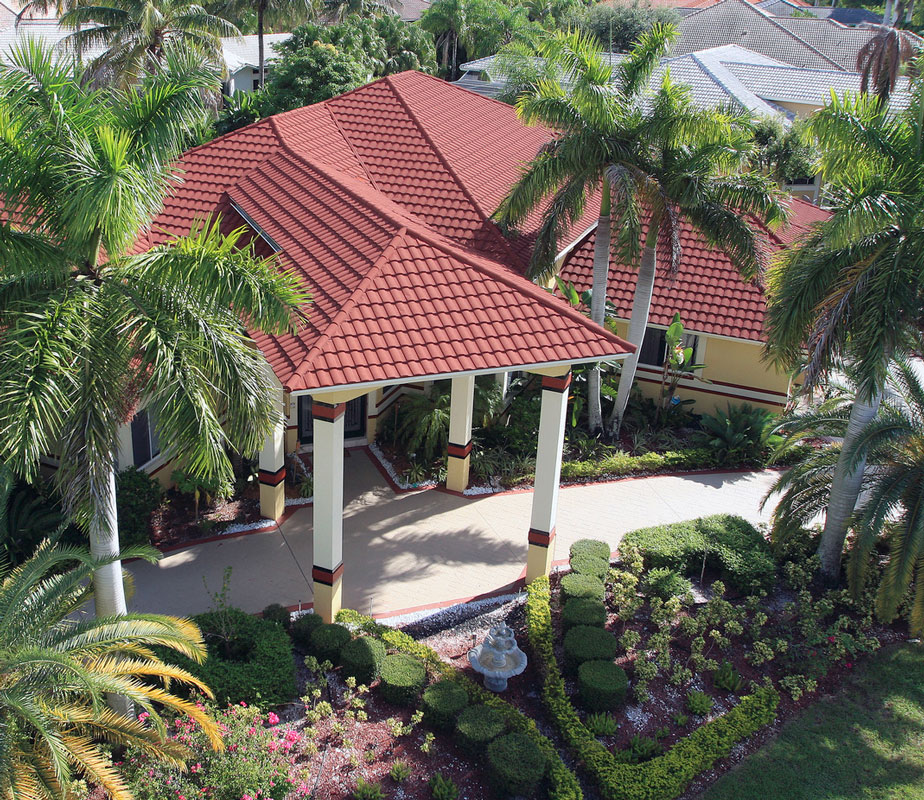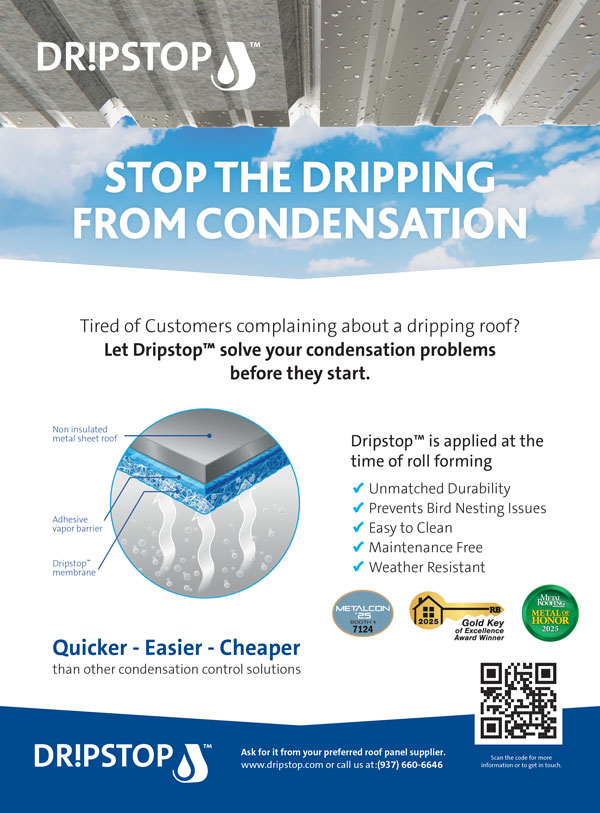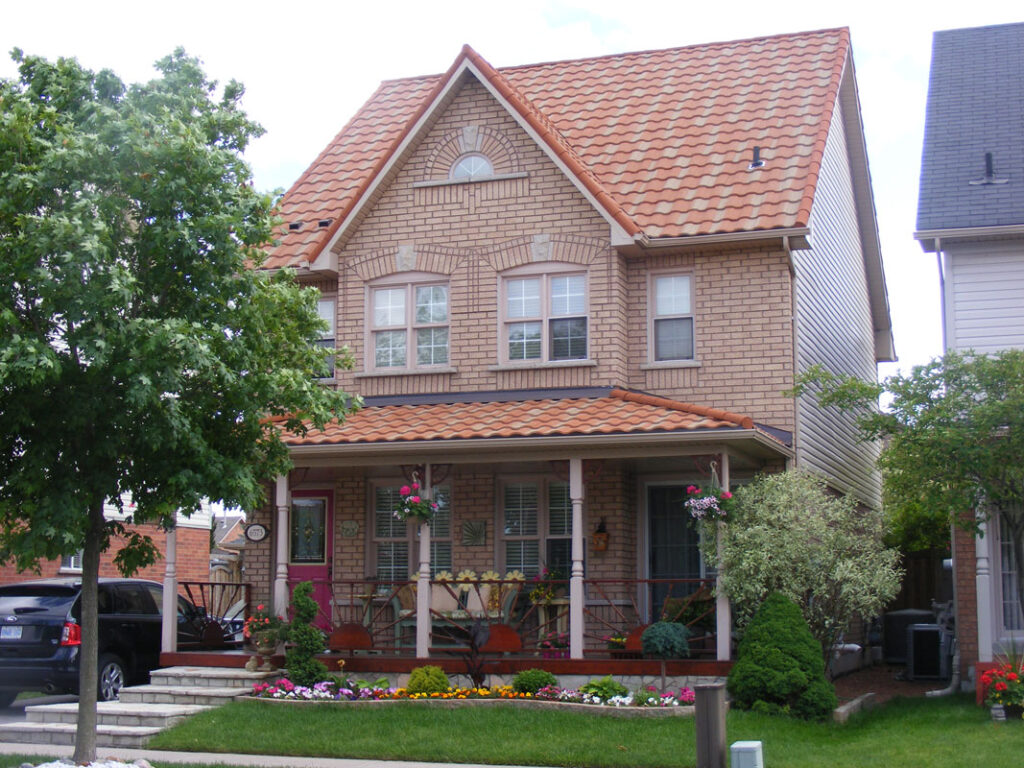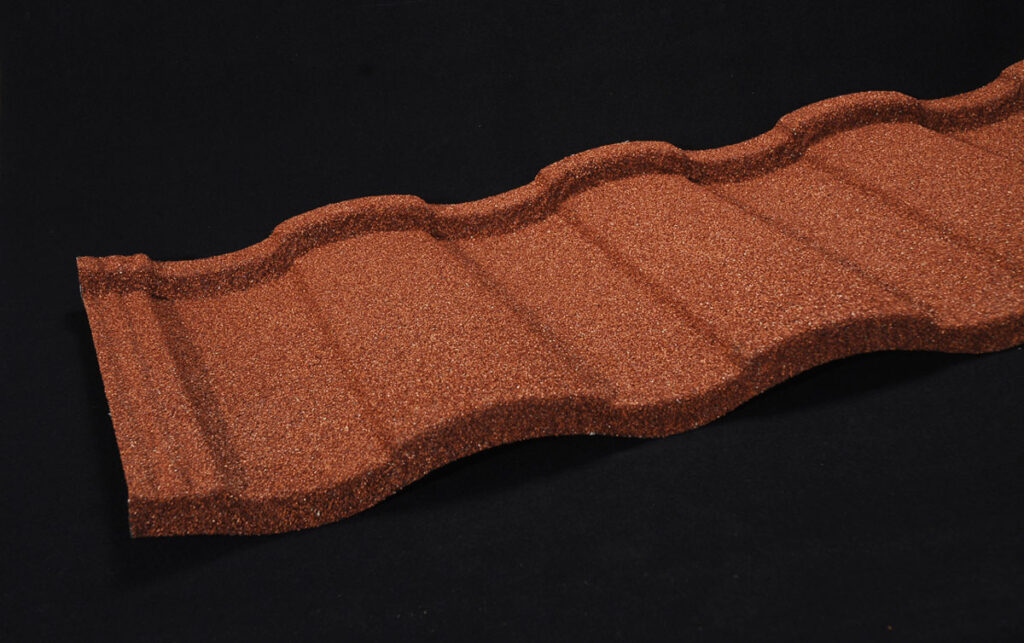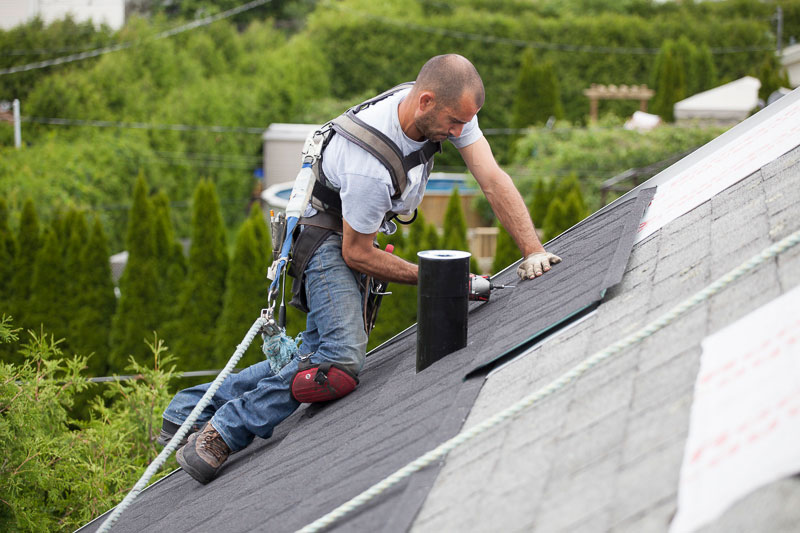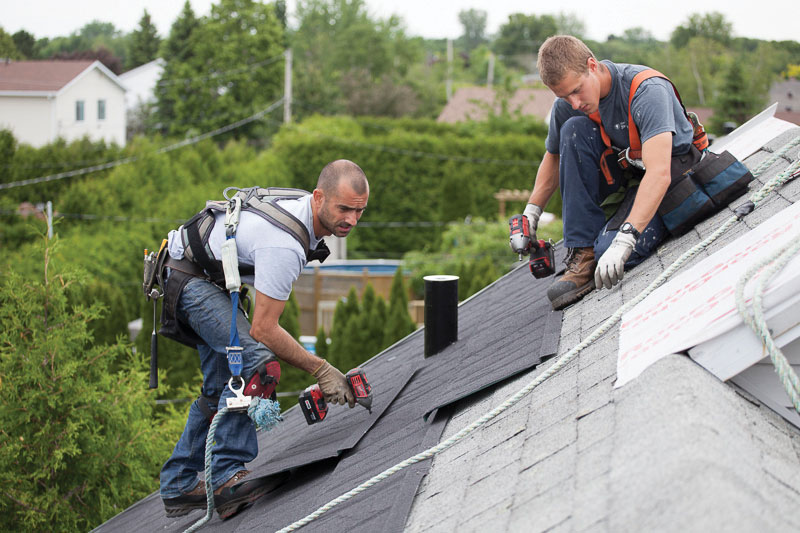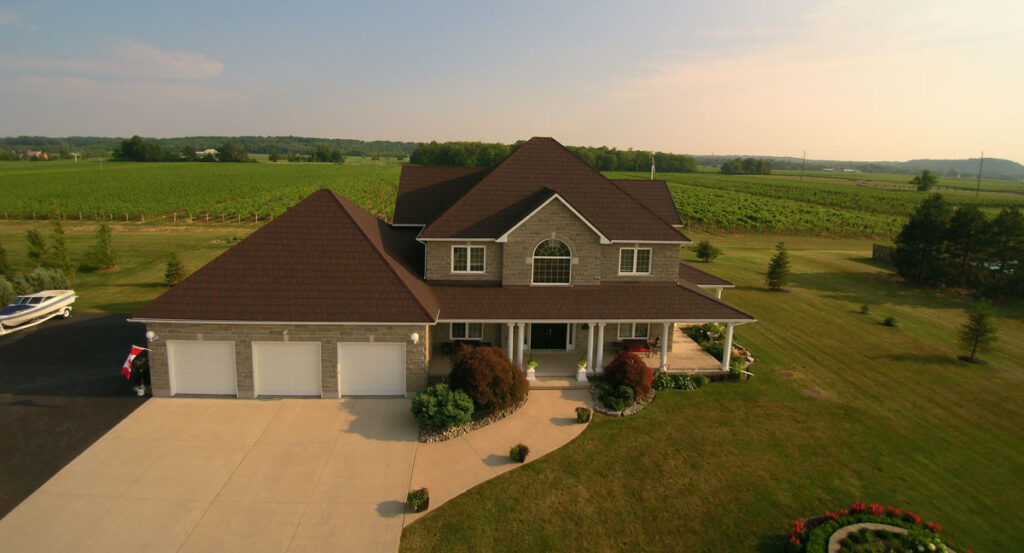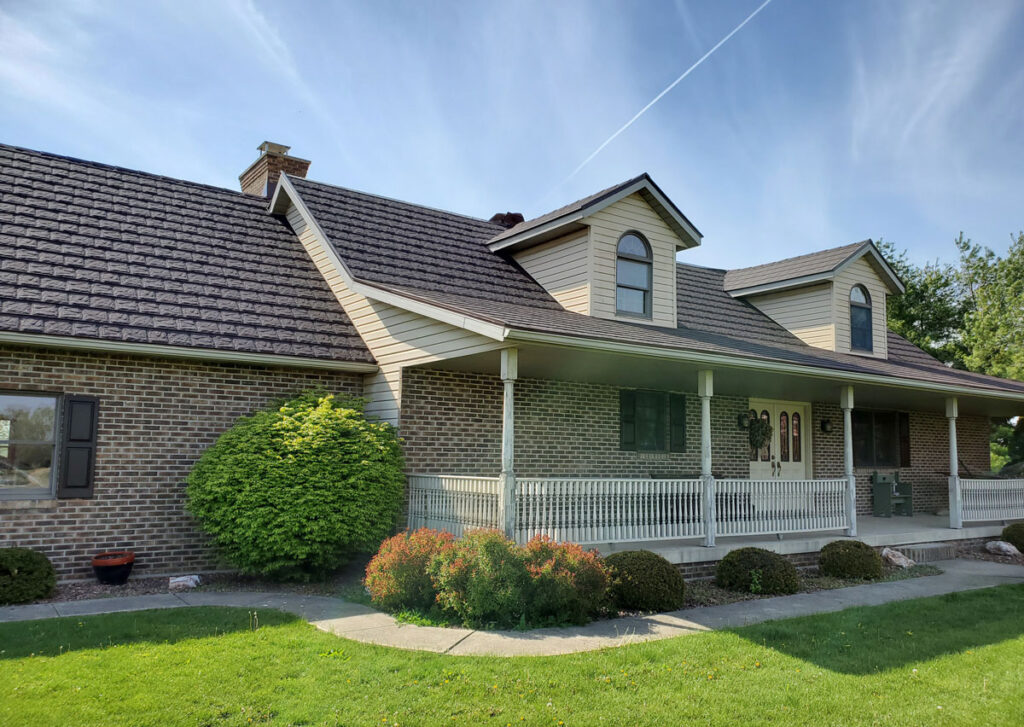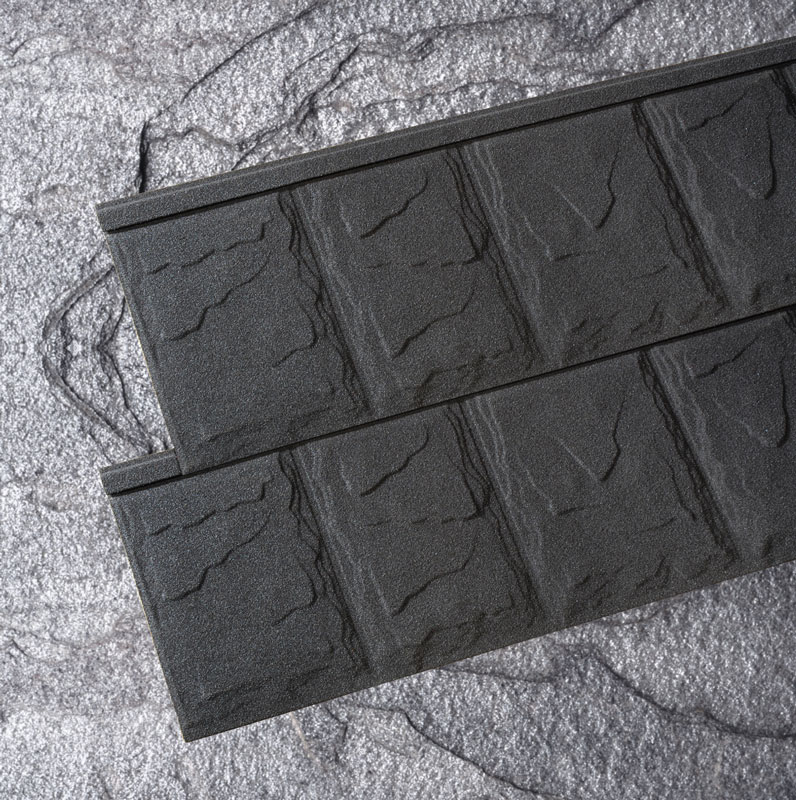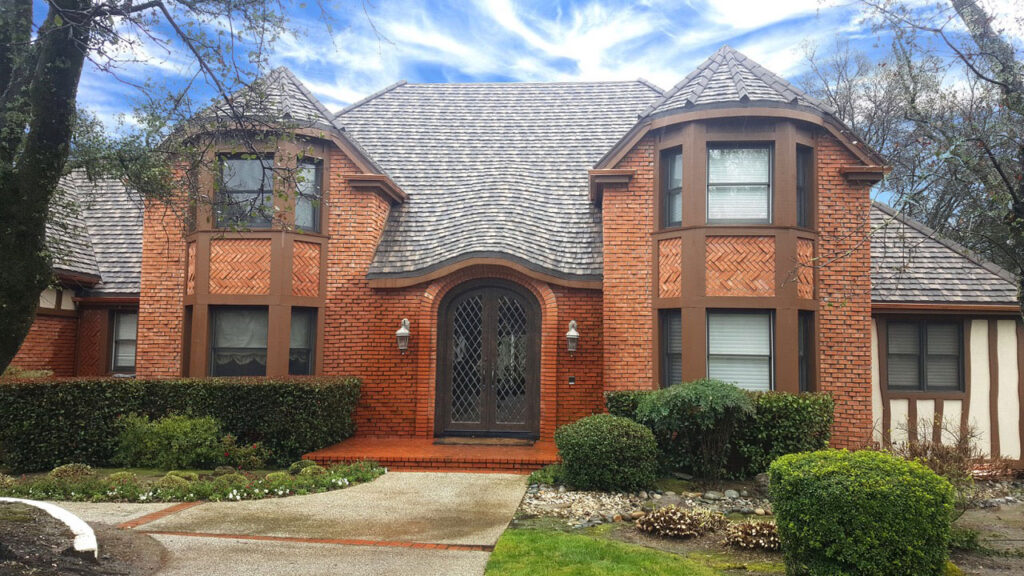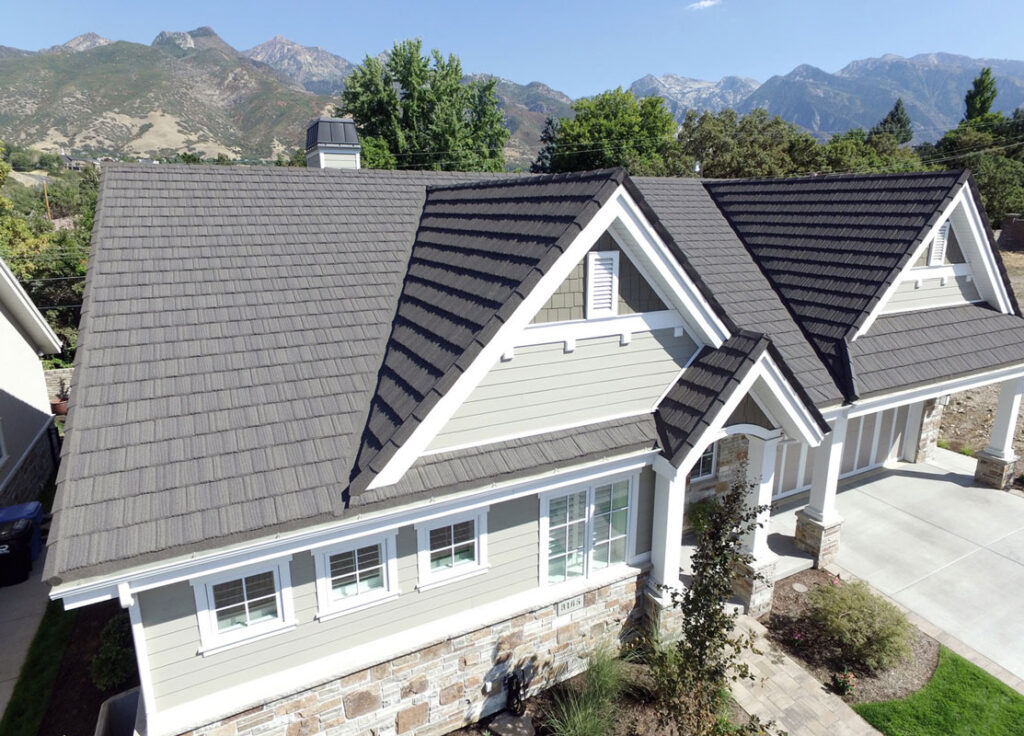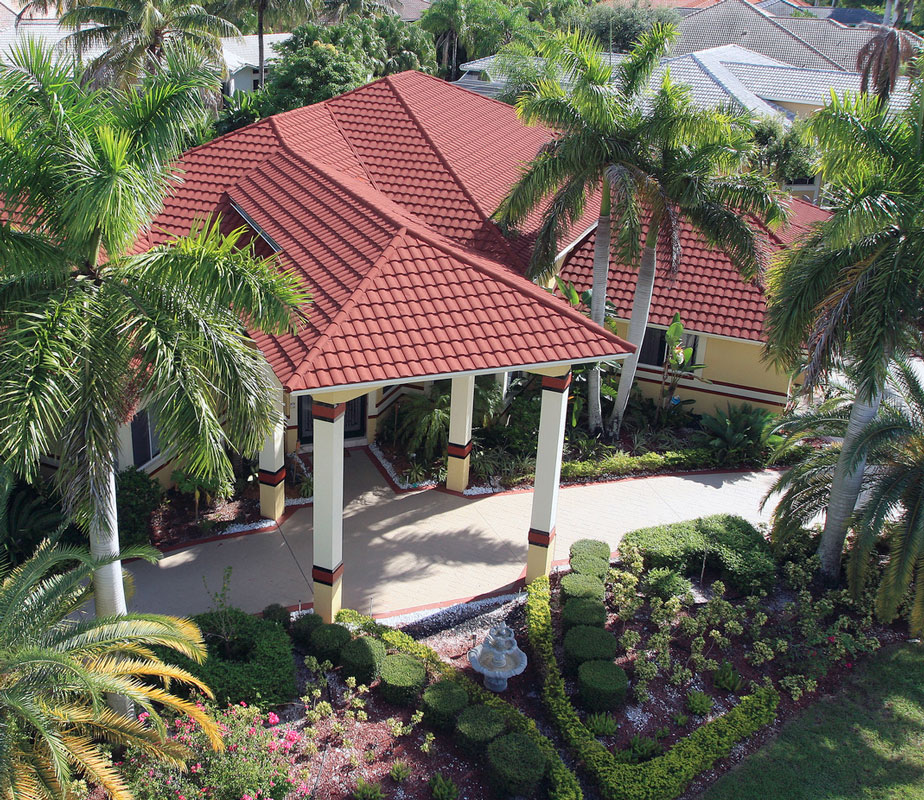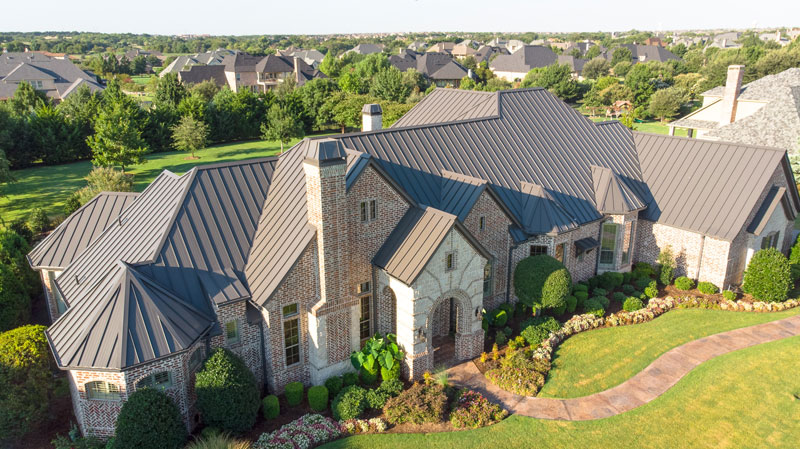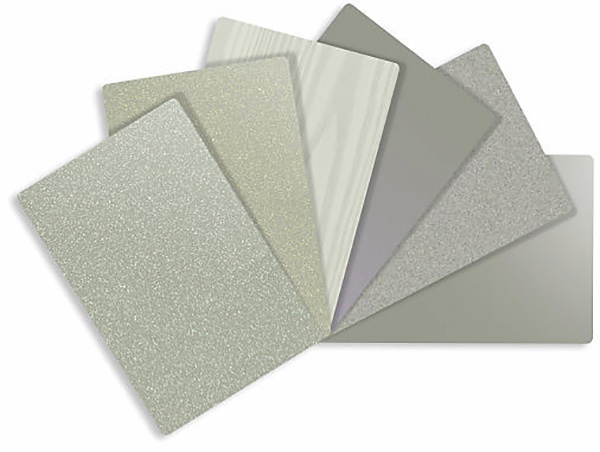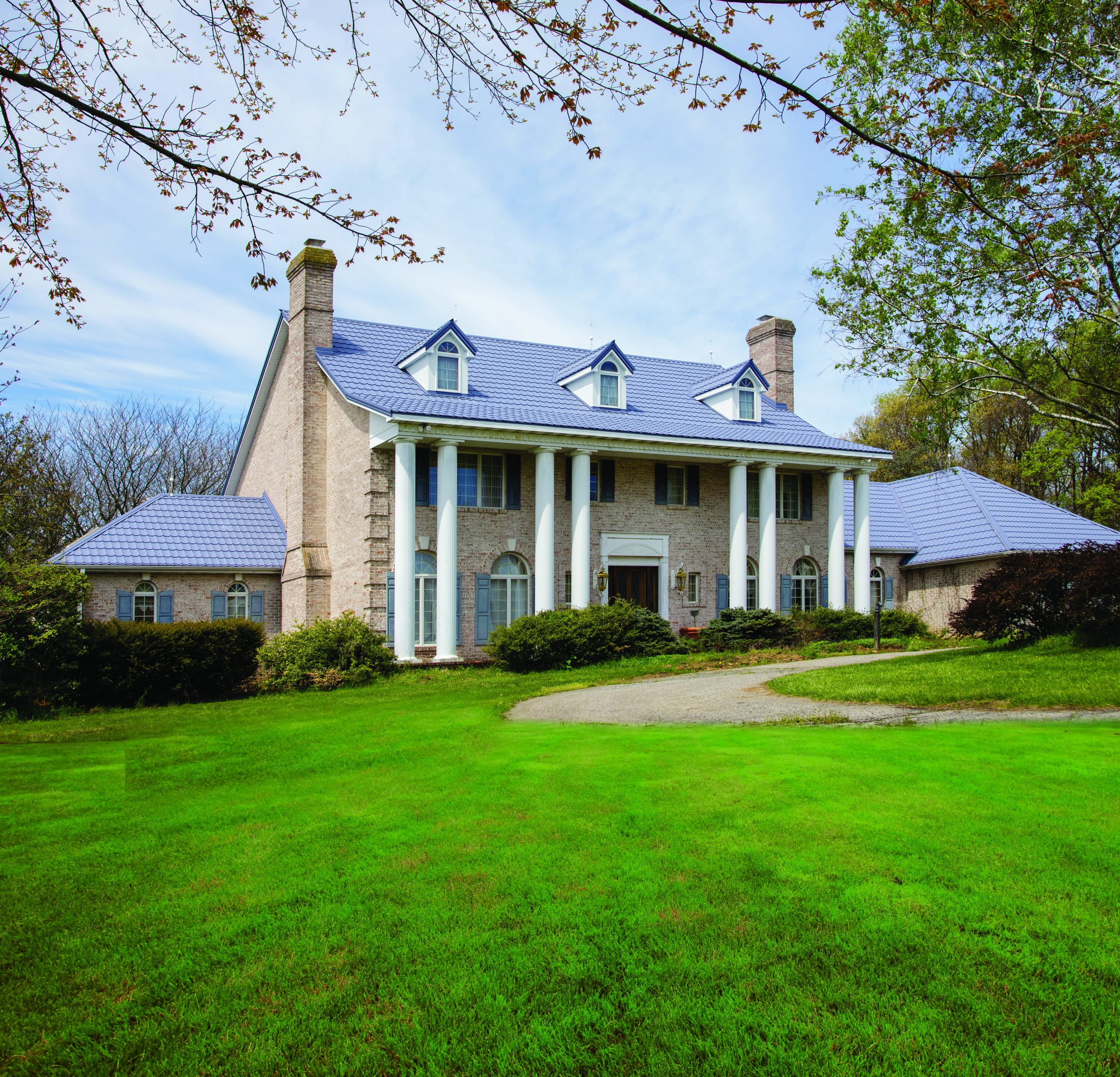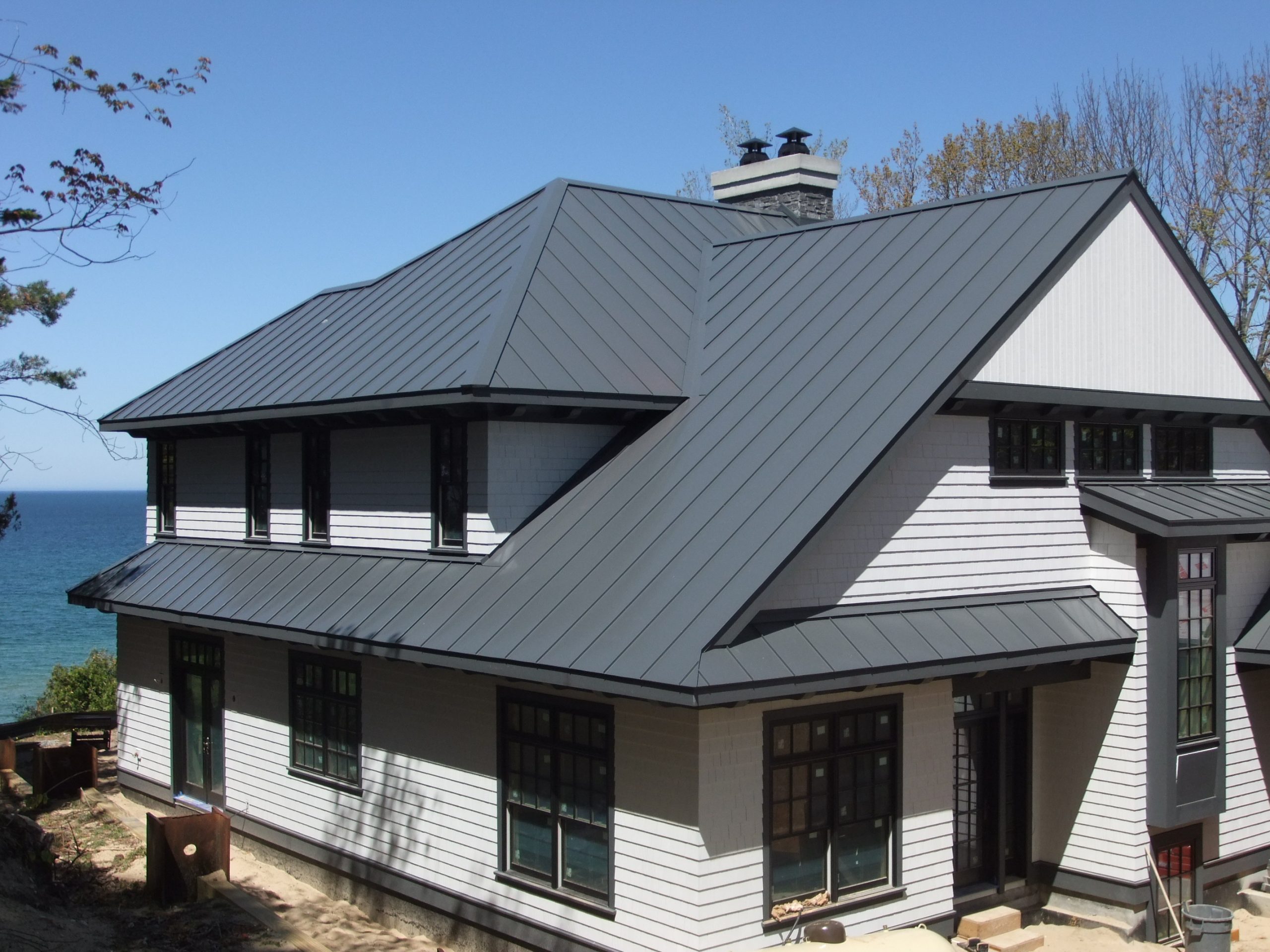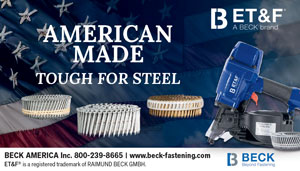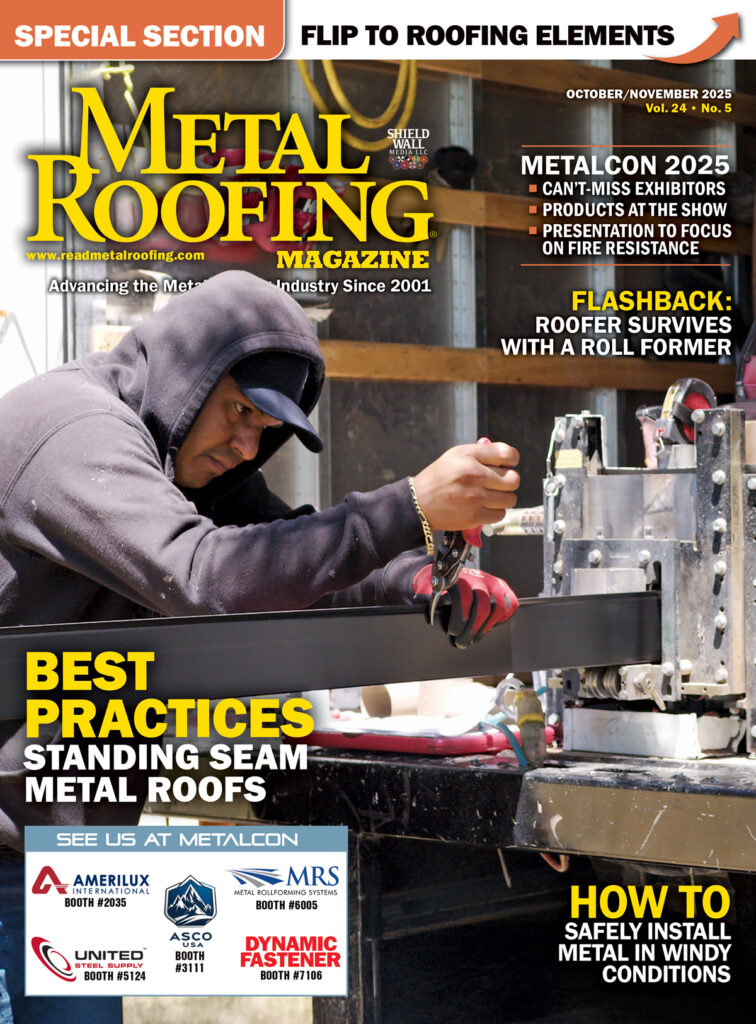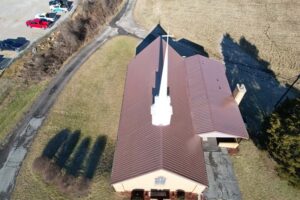By Metal Roofing Magazine Staff
Stone-coated steel shingles can help provide customers with a roof that is durable, attractive, and long-lasting. However, many metal roofers are still unfamiliar with these systems. Mike Kilty, president of Ontario, Canada’s METSTAR M.I.T. Inc., says, “The thing that may surprise most people about stone coated steel (SCS) shingles is that they have been around for 67 years (1957) and are still the roofing industry’s best kept secret. There was a great commercial back in the day that a couple heading to a dinner party were looking for the house with the ‘metal roof’ and couldn’t find it (because it was stone-coated and blended so well). Most people do not know that SCS roofing is even a thing, even though they probably drive by one every day.”
Familiarity with — and attraction to — SCS is growing. “Generally speaking, stone coated metal roofing is growing tremendously in popularity because of its durability, weather resistance and lighter weight,” says Robin Anderson, Technical and Strategy Development Manager of Westlake Royal Roofing Solutions. “Unified Steel Stone Coated Roofing, for example, demonstrates how lightweight the product can be, coming in at just 1.5 pounds per square foot while still benefiting from the structural strength of steel. These attributes make the product ideal and widely sought for both new construction and retrofit applications.”
Stone-coated steel mimics the look of many types of traditional roofing materials while having the added benefit of longevity and durability. “Builders now have at their fingertips SCS panels that look like slate, shakes, shingles, many forms of tiles in such a myriad of colors and profiles that they can offer their clients every option in the roofing repertoire all while enjoying the strength and longevity of the steel,” Kilty says.
“All of these options give customers the ability to match the product to the project, so it complements all types of home architecture styles,” contributes Anderson. “Additionally, consider that, unlike painted metal roofing, the granule surface of a stone coated metal shingle provides greater texture and reduces the glare commonly attributed to other metal roofing products.
“Stone coated metal shingles are designed for longevity. For example, Westlake Royal Roofing Solutions Unified Steel™ Stone Coated Roofing boasts a warranted lifespan of 50 years … When compared with asphalt shingles, Unified Steel will last almost three times as long on the roof as determined from data on reroofs that is based on the average lifespan of asphalt shingle roofing at 19.5 years. (The source for this data is 3M Economic Forecast for the Asphalt Shingle Industry 2020 – F.W. Dodge-Pre-2003, NAHB-Post-2003.)
“Longevity also relates to durability,” Anderson continues. “The durable nature of a stone coated metal shingle means that a properly installed system will stand up to the forces of nature to provide protection from some of the harshest conditions.”
In addition to the long-lasting performance and pleasing aesthetics, because of the coarse texture, stone-coated steel roofs also offer built-in snow retention; they may not need an added snow retention system.
Further benefits include the highest standards in fire, wind, and impact resistance. Plus, SCS roofing systems can be installed in all seasons. They are made with recycled content and are fully recyclable at the end of their service life.
Installation Tips
Proper installation requires precision and attention to detail. Regarding attachment, which like other metal roofing systems is critical to the roof’s performance, Anderson says, “The primary means for fastening a stone coated metal shingle is by use of screws specifically designed to the job. This is common for both direct-to-deck and batten systems. The use of screws helps to provide the overall performance levels that are achieved by such systems.
“Most stone coated metal manufactures have similar details on how to install their products,” he continues. “The biggest determiner is whether to install direct-to-deck or use a batten system. Most manufacturers also have the option of exposed or concealed fastener systems. Of course, product installation will vary somewhat from manufacturer to manufacturer. Roofing contractors should always follow the installation guidance provided by the manufacturer of the product being installed.”
Using the right underlayment is critical in the protection against water infiltration and to ensure the roof performs as designed. Kilty adds, “The use of a high-quality underlayment system (details of which would be considerate of geography/weather systems and roof pitch) is essential to ensure the roof system installed is the last one ever needed for the project.”
Value Over Price
If installed properly, SCS roof systems may be the last roof a structure will ever need. These systems are designed to survive the elements: “It is a great roofing option for customers looking to withstand numerous types of inclement weather events including snow, hail, fire and wind,” explains Anderson. “As these weather events become more common and more severe, they pose substantial risk to homeowners whose roofs can be damaged by them. Homeowners are becoming more and more educated about this and are playing a much greater role in the decision of which roof product to choose. We are seeing them increasingly choose roofing systems like stone coated metal, not just for its beauty, but for its ability to last and withstand inclement weather.
“With stone coated metal roofing, its modular design and fastening patterns help it withstand severe wind events,” he offers. “Some options even meet codes for the most stringent wind regions, including in Miami Dade County, where requirements reach as high as 180 mph. The material also helps protect the structure from fire spread. Some options are shown by testing results to meet ASTM-E108. Additionally, with its steel composition, panel profile and installation methods, the material can carry more snow load weight than other roofing options.
“Some stone coated steel roofing options also meet the ASTM Class 4 Impact rating for hail resistance. Some go beyond that, offering a rating for FM-VSH (very severe hail).”
Kilty summarizes the appeal: “Stone Coated panels are in a nutshell the most rugged and long-term the most economical roof system on the market, they just come with a higher upfront cost.”
By following best practices, roofers can achieve a high-quality installation of SCS roofs, delivering superior durability, weather resistance, and aesthetic appeal. Proper planning, meticulous attention to detail, and adherence to manufacturer guidelines are essential to successful installation. By selecting appropriate materials and following industry best practices, roofers can provide building owners with peace of mind knowing that their investment is protected for years to come. MR


